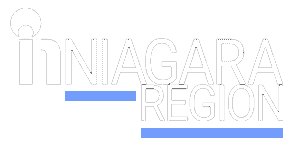Niagara Region hit with 335 new COVID-19 cases, Grimsby now has one case for every 90 residents
Published December 31, 2021 at 2:25 pm

As expected, a year-end surge has pushed Niagara Region past 3,000 active COVID-19 cases and left Grimsby, in particular, quite vulnerable as the tiny town now has one active case for every 90 residents.
Today’s (December 31) new case count of 335 versus just 33 resolved cases has Niagara sitting at 3,033 active cases.
That 335 daily case count is the third-highest in the region since the pandemic began March 2020 but since the second-highest of 339 was set yesterday and the all-time high of 346 new cases was set on Tuesday, it’s a fairly solid indication that the Omicron variant has flooded Niagara.
The highest daily number of the original Alpha variant was 238 on January 11 while the peak of the Delta second wave was 220 new cases on April 15. So while those two variants were far more deadly, the seemingly less lethal Omicron is more contagious than the last two variants combined.
(Keep in mind it is too early in the Omicron surge for medical experts to gauge its actual strength. The only barometer at the moment is that hospitalizations haven’t increased comparatively with the new cases spike.)
As has been the case, St. Catharines and Niagara Falls are leading the active caseloads with 844 and 613 respectively. Next up is Grimsby with 325 and the real number is that the town leads Niagara with 110.8 cases per 10,000 residents. That now means Grimsby has one case for every 90 citizens.
With the recent surge, all but two Niagara municipalities are in triple digits in terms of actives cases. Welland is next with 251 cases while Lincoln follows at 176 and Thorold is recording 166, Fort Erie (once a hotspot) has 139 cases ongoing while Niagara-on-the-Lake trails at 130. Both Port Colborne (103) and Pelham (102) were above 100 for the first time over the entire pandemic, leaving West Lincoln down at 80 and Wainfleet at the bottom with 21 cases.

A look at Niagara Region’s daily case numbers since July
leading to late December’s spikes. While several days in July
and August hit one new cases, Niagara Region hasn’t seen a
zero new cases day in 2021.
INsauga's Editorial Standards and Policies









